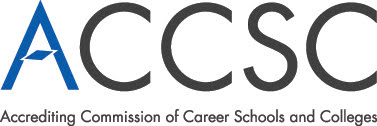Becoming a Licensed Massage Therapist
As a massage therapist, you can help people relax by using various techniques that reduce stiffness or discomfort. So, this is a career that can give you the chance to support others on their wellness journey.
Becoming a massage therapist starts with knowing where to get the right education so you can then get the necessary license that will prove you’re qualified to work in this growing field.
Steps to become a massage therapist
Are you interested in learning about the main steps involved in becoming a massage therapist? The information below can help you get started.
Enroll in a massage therapy program
After graduating high school or getting your GED, begin searching for an accredited massage therapy program that will allow you to get a diploma or degree.
There are many schools that offer this type of training all over the country, so you have a lot of options to compare based on factors like tuition, class size, schedule, and location.
Consider if you’d like to go into a specialty area of massage therapy (e.g. sports massage, stone therapy, deep tissue massage, pregnancy massage, etc.), or if you’d like to open your own massage therapy business. These factors can also help you narrow down your school options.
Acquire hands-on experience
While you’re in school, focus on getting hands-on training. Every state may have varying requirements, and your school can help you acquire the necessary number of hours of training.
To get hands-on experience before you graduate, you might be able to sign up for an internship. Or, if your school has a massage clinic on-site, like the ones at IBMC, you might be able to take advantage of that instead.
Get your massage therapy license
After completing a massage therapy program, the next step is to get your license to work in the field.
Different states may have differing requirements when it comes to the exam you need to take for licensure. For instance, you might need to pass the Massage and Bodywork Licensing Examination (MBLEx).
With training and exam requirements met, you can then apply for your state license. And once you have your license, you can start applying for work!
Note: If you’d like to open your own massage therapy practice, check your state’s requirements regarding business licenses you might need as well.
Keep your license current
After you’ve received your license, you’ll need to complete massage therapy continued education to keep it active.
To do this, you might be able to enroll in classes on a range of topics that will help you keep learning. Simply check your state’s rules to be sure you meet all of the requirements.
Consider optional certifications
You might not need any certifications to be employed as a massage therapist, but if you want to work in a specialty area, pursuing a certification might be helpful.
By working toward a certification, you can hone in on an area of expertise, such as rehabilitative massage or veterinary massage. And with the right credentials, you can prove you have what it takes to work in a specialty area, so it might open up more opportunities.
How long does it take to become a massage therapist?
The amount of time you’ll need to put into your education will depend on the program you enroll in.
If you’re working toward a certificate or diploma, it might take a year or less. On the other hand, an associate’s degree might take two years.
Other factors, such as whether you’re attending part-time or taking online classes, may also impact how long you’ll be in school.
Massage therapy school options
There are various massage therapy schools, vocational schools, and colleges offering programs that can help you get started on the track to working as a massage therapist.
In addition to location and cost, here are some things to consider as you weigh your options:
Accreditation
It’s best to stick with programs that are accredited, such as by one of the following:
- Commission on Massage Therapy Accreditation (COMTA)
- Accrediting Bureau of Health Education Schools (ABHES)
- Accrediting Commission of Career Schools and Colleges (ACCSC)
- National Accrediting Commission of Cosmetology Arts and Sciences (NACCAS)
- Accrediting Council for Continuing Education and Training (ACCET)
- United States Department of Education (USDE)
Coursework
As you try to figure out which school to attend, consider the required courses, hands-on training, internships, and electives that are included in a massage therapy program.
A well-rounded program may include courses on a variety of massage techniques, as well as foundational classes on topics like anatomy and physiology.
Finding massage therapy jobs
Massage therapists are in demand, and they’re needed in a variety of settings, such as healthcare facilities, fitness centers and gyms, hotels, and spas. Plus, you can start your own business if you’d prefer being your own boss.
Although the field might be competitive, with the right education, you can stand out against other job seekers. Therefore, choosing the best massage therapy school and program is key.
Get started at IBMC
If you want a career as a massage therapist, IBMC can provide you with the training you need. Contact us today to learn more.


